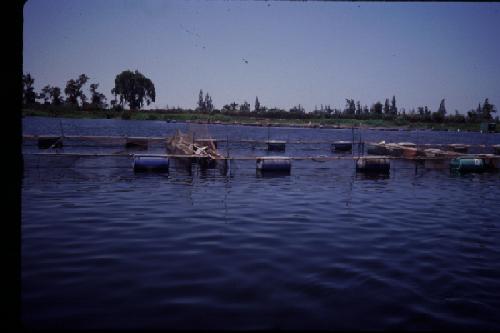 Cage culture(net
pens) of Tilapia in Egypt
Cage culture(net
pens) of Tilapia in Egypt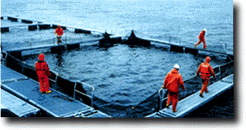 Steel
cages in the Pacific Ocean, Chile
Steel
cages in the Pacific Ocean, Chile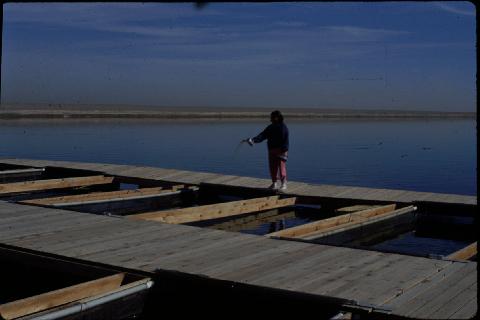 Catfish
cages in a reservoir on the Ak-Chin Reservation, AZ
Catfish
cages in a reservoir on the Ak-Chin Reservation, AZ
There are many different types of structures that house an aquaculture facility. The type of structure chosen depends on several factors, some of which include: type of species to be raised, climate of area, location of site, available funding for a structure, and size of the operation.
Some of the various facilities found in use in different climates and locations include::
cages in natural waterways, generally using a floating system in a lake, sea or other large body of water to separate the cultured stock from the native fish
 Cage culture(net
pens) of Tilapia in Egypt
Cage culture(net
pens) of Tilapia in Egypt Steel
cages in the Pacific Ocean, Chile
Steel
cages in the Pacific Ocean, Chile Catfish
cages in a reservoir on the Ak-Chin Reservation, AZ
Catfish
cages in a reservoir on the Ak-Chin Reservation, AZ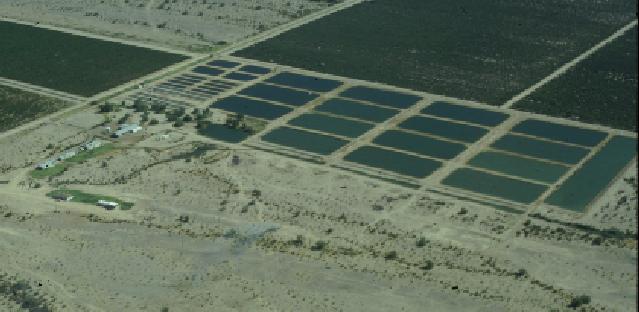
Watershed ponds, damning a natural
stream or valley or using a natural pond.
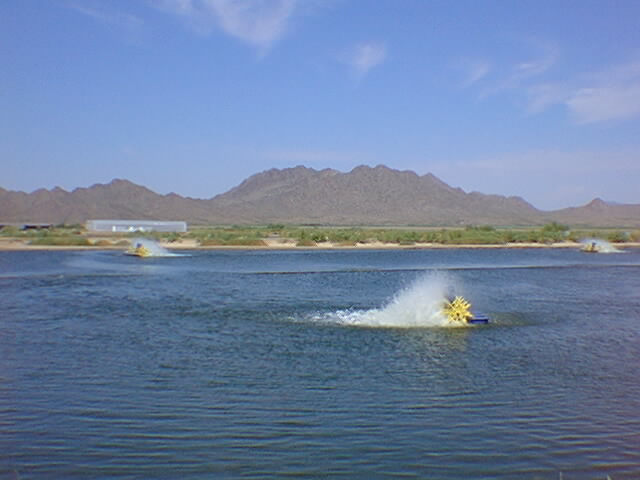 Shrimp pond
in Gila Bend, AZ with paddle aerators
Shrimp pond
in Gila Bend, AZ with paddle aerators
Tanks and Raceways may also be used, for information on these, see the startup page.
Due to extremes in climate, aquaculture facilities may also be enclosed
in order to better control the environmental conditions
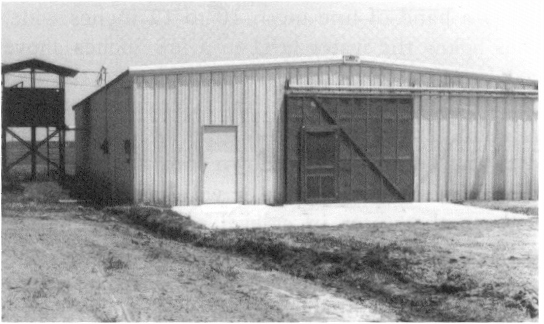 This metal
building houses a hatchery for the rearing of fry.
This metal
building houses a hatchery for the rearing of fry.
 This
greenhouse also contains a hatchery
This
greenhouse also contains a hatchery
As you can see, the more complex the system becomes, the more needs
a facility has, a most obvious need being electricity or some other source
of power to run equipment for climate control, water and air circulation,
and even feeding.